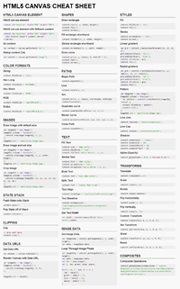4 Things That Slow Down Your Website
Description

Webpages that load slowly are frustrating and bad for business. Slow loading web pages can mean lost sales due to low retention rates, website abandonment, and loss of private information and intellectual property.
It's a losing battle for marketers to keep their subscribers engaged when their website is slow and frustrating to use. They aren't able to develop those relationships with their audience simply because they have immediately removed the trust and authority standing they had. This is why optimizing the appearance of your website speed should be at the top of any marketer's list this year.
Website Speed Is Important
Your website speed will affect your search engine rankings. Slow loading webpages that take up to 3-5 seconds to fully load will be penalized by Google; this will lead to customers getting frustrated and moving on to the next thing. Here are a few things that can contribute to slow page speed and how to improve it.
Too Much Code
The website will be slow if you have too many pieces of Javascript, CSS, and HTML code.
One of the biggest contributors is third-party code, such as ads and tracking cookies. Sometimes these snippets aren't written in a way that's easy for a CSS or Javascript framework to determine what belongs where and that's part of the layout. It's a waste of network resources to have outdated code that no longer works.
How to improve this: Make sure you're using vendor-supported new technologies and avoid spaghetti code unless you're willing to write your own HTML, CSS, and JavaScript.
Poor Use Of Cookies
Advertisers use remarketing and retargeting cookies to track how many people have visited the website and how often. A retargeting cookie will be triggered before an ad is shown to you on that website if you have previously viewed or searched for content.
How to improve this: Head to a professional developer to get the right cookies on your website. Once you have cookies in place, you can then turn to a professional service like clickintelligence.co.uk to help you design and implement retargeting ads that will help you bring back visitors who left your website hastily last time and give them another reason to try out your faster loading website.
Large Images
Large images can often cause slow page speed. Excessive file sizes in a webpage can limit the download speed and increase the number of requests from the browser to your server. It's important to keep a relatively small size reservation for images that are small in dimensions and large when viewed on different screen sizes.
If you know your visitors are coming from mobile devices, it's important to ensure you're only loading the images needed for the viewport size.
How to improve this: Images should always be served via an image-optimization web service such as imgix or imgify to get faster loading times and smaller file sizes than resizing them yourself.
Not Using A Content Delivery Network
A Content Delivery Network (CDN) is a server network that serves content to your website visitors. This is ideal for those with multiple websites or a large amount of traffic. A CDN will significantly decrease the time it takes to get your web pages loaded, and you'll have more bandwidth available for a higher number of requests.
How to improve this: A CDN can also be used with customers in different geographic locations or diverse business types, so even if you have an eCommerce store serving customers from around the world, a CDN can help with load times and server load.
 Blog
Design
Development
Mobile
Inspiration
CSS
Javascript
News
Opinions
Politics
Menu
Blog
Design
Development
Mobile
Inspiration
CSS
Javascript
News
Opinions
Politics
Menu
